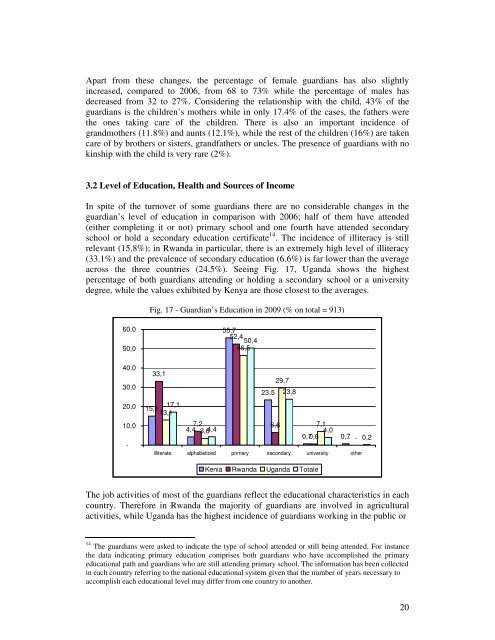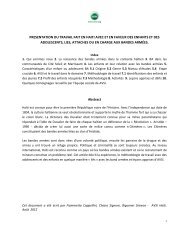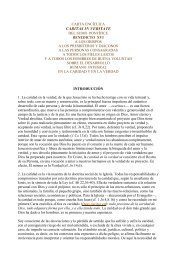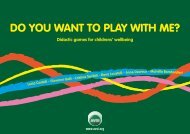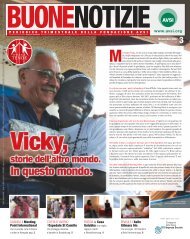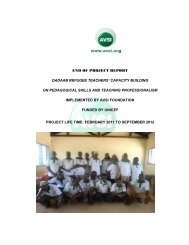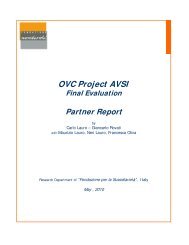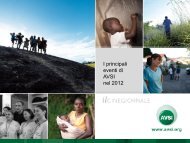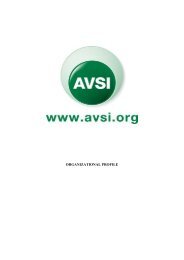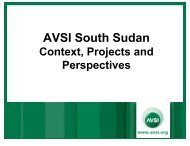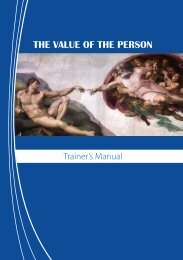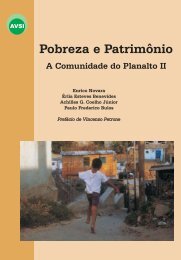AVSI OVC Project Final Evaluation Children Report
AVSI OVC Project Final Evaluation Children Report
AVSI OVC Project Final Evaluation Children Report
- No tags were found...
You also want an ePaper? Increase the reach of your titles
YUMPU automatically turns print PDFs into web optimized ePapers that Google loves.
Apart from these changes, the percentage of female guardians has also slightlyincreased, compared to 2006, from 68 to 73% while the percentage of males hasdecreased from 32 to 27%. Considering the relationship with the child, 43% of theguardians is the children’ s mothers while in only 17.4% of the cases, the fathers werethe ones taking care of the children. There is also an important incidence ofgrandmothers (11.8%) and aunts (12.1%), while the rest of the children (16%) are takencare of by brothers or sisters, grandfathers or uncles. The presence of guardians with nokinship with the child is very rare (2%).3.2 Level of Education, Health and Sources of IncomeIn spite of the turnover of some guardians there are no considerable changes in theguardian’ s level of education in comparison with 2006; half of them have attended(either completing it or not) primary school and one fourth have attended secondaryschool or hold a secondary education certificate 14 . The incidence of illiteracy is stillrelevant (15.8%); in Rwanda in particular, there is an extremely high level of illiteracy(33.1%) and the prevalence of secondary education (6.6%) is far lower than the averageacross the three countries (24.5%). Seeing Fig. 17, Uganda shows the highestpercentage of both guardians attending or holding a secondary school or a universitydegree, while the values exhibited by Kenya are those closest to the averages.Fig. 17 - Guardian’ s Education in 2009 (% on total = 913)60,050,040,030,020,010,0-55,752,450,446,533,129,723,5 23,817,115,113,17,26,6 7,14,4 3,64,44,00,70,6 0,7-- 0,2illiterate alphabetized primary secondary university otherKenia Rwanda Uganda TotaleThe job activities of most of the guardians reflect the educational characteristics in eachcountry. Therefore in Rwanda the majority of guardians are involved in agriculturalactivities, while Uganda has the highest incidence of guardians working in the public or14 The guardians were asked to indicate the type of school attended or still being attended. For instancethe data indicating primary education comprises both guardians who have accomplished the primaryeducational path and guardians who are still attending primary school. The information has been collectedin each country referring to the national educational system given that the number of years necessary toaccomplish each educational level may differ from one country to another.20


